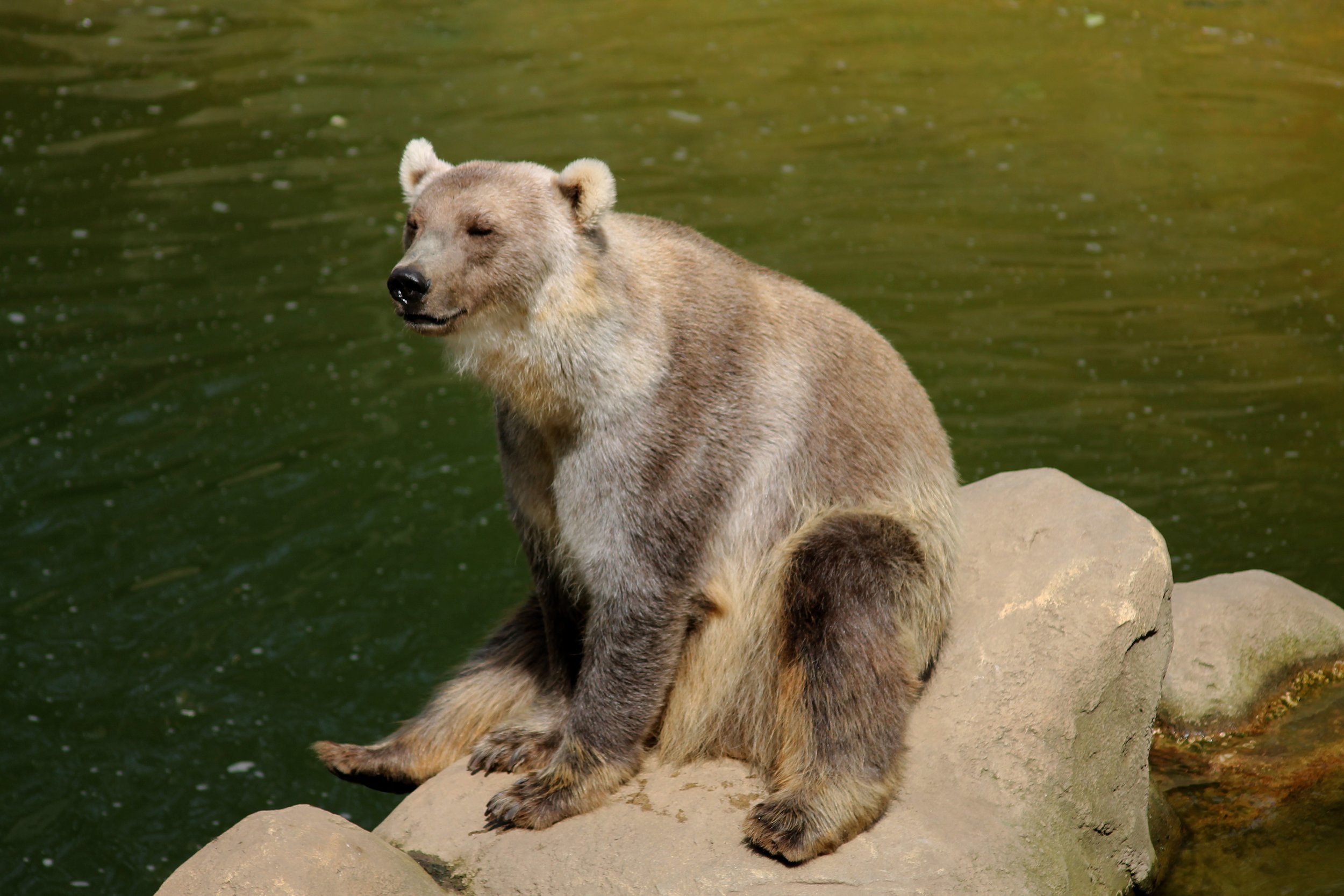Grolar Bears
Hybrid bears and their impact
Gold Star Canadian Tours Lead Scientist, Cate Collins, discusses the outcome of inter-species breeding between Polar Bear and Grizzly Bears.
Polar Bear + Grizzly Bear = Grolar Bear
Yes, it happens! When a grizzly bear and a polar bear mate, the resulting offspring is considered a hybrid cub. These cubs have a combination of characteristics from the two parent species and are commonly called grolar bears.
Polar bears live, mate, den, and hunt on the sea ice, whereas grizzlies are strictly terrestrial bears. However, with a warming climate, polar bears are spending more time on land during the summer months and the habitat of grizzly bears is expanding further north. The result is an increased overlap in the territories of these two species. Sightings of grizzly bears in recent years in Wapusk National Park, a polar bear denning area south of Churchill, Manitoba, support this trend. Yet, hybrids remain rare. The first confirmed hybrid in the wild was discovered in 2006 along the Beaufort Sea in the Northwest Territories. Over the following eight years, seven more hybrid bears were identified in the wild. A somewhat humorous twist: genetic testing revealed that all of the hybrid bears shared the same polar bear mother, who evidently mated with multiple grizzly bear fathers. Although these were the first confirmed hybrids in the wild, researchers had speculated about their existence since hybrid cubs had previously been bred in zoos, such as at the Osnabrück Zoo in Germany in 2004.
How common is a polar bear and grizzly hybrid?
Typically, hybrids are sterile and are incapable of producing offspring of their own. However, polar bear and grizzly hybrids are in fact fertile which suggests a relatively recent split between the two species in an evolutionary timespan. In fact, genetic analysis has shown that these two species hybridized during the Pleistocene – the geological epoch that lasted from 2.58 million to 11,700 years ago. During this time period there were repeated glacial cycles which impacted species habitat and range as the ice advanced and retreated. These glacial cycles would have forced polar bears and grizzlies into closer proximity and likely lead to inter-species breeding opportunities. To that end, Scientists have indeed found evidence of gene flow from polar bears into brown bears during this time period.
Will natural selection favour Grolar Bears?
Hybrids have a mix of polar bear and grizzly bear characteristics. So the question could be raised, “would they be even better at surviving compared to their parent species?” Unfortunately, this is not the case. Polar bears evolved over tens of thousands of years to thrive in one of the harshest environments on our planet. Hybrids lack some of the critical adaptations that enable polar bears to thrive in the Arctic such as their skull and tooth structure. Since grolar bears are not well adapted to life as a polar bear nor a grizzly bear, it makes them less likely to survive and reproduce. Given that hybrids are poorly adapted to their environment, they are unlikely to pose a threat to polar bear populations. Researchers anticipate that grolar bears in the wild will continue to be a rare occurrence. Unquestionably, the greatest threat to polar bear survival continues to be the loss of sea ice due to climate change.
About Gold Star Canadian Tours
At Gold Star Canadian Tours, we focus on providing the worlds best travel experiences to authentically Canadian destinations. Our flagship tour is a convenient 1-day Polar Bear Expedition with dedicated non-stop charter flights from major airports directly to Churchill, Manitoba. With Gold Star Canadian Tours, the wonders of the Arctic are closer than ever. Your Adventure Awaits!


